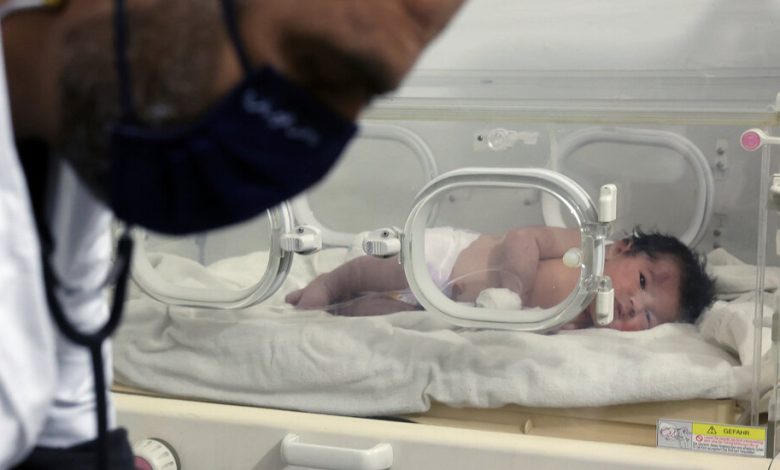From a baby born in the rubble to a trapped teenager, many earthquake victims are children.

A baby born under the rubble and rescued, alive, hours later. Two little girls lying flat in the wreckage of a collapsed building. A boy dangling from a roof, reciting the Muslim prayer of death. A teenage boy recording himself under the ruins of his home, wondering if he will live or die.
Harrowing images have emerged of some of the millions of children caught in the catastrophic earthquake in Turkey and Syria.
Some have been rescued alive, looking shellshocked, disheveled, their clothes, skin and hair layered with dust. Others have not been so lucky, their dead bodies wrapped in blankets and laid beside the road or clutched in the arms of grieving parents. Some children are the lone survivors of their families or are unidentified; rescue workers are frantically trying to reunite them with relatives.
“It is unlikely that a single child has emerged unscathed in the areas that have been devastated by the earthquake, physically or psychologically,” said Joe English, a spokesman for the U.N. children’s agency UNICEF.
Deadly Quake in Turkey and Syria
A 7.8-magnitude earthquake on Feb. 6, with its epicenter in Gaziantep, Turkey, has become one of the deadliest natural disasters of the century.
- A Devastating Event: The quake, which was followed by an aftershock almost as big, rippled through neighboring countries; an area along the Syrian-Turkish border was hit particularly hard.
- From the Scene: Thousands of people have been killed, and dozens of cities have been gutted. Here is how witnesses described the disaster.
- Rescue Efforts: As the window for finding survivors was beginning to narrow, Turkey faced daunting logistical challenges in executing rescue operations.
- Help From Abroad: Governments around the world were quick to respond to requests for international assistance after the earthquake, deploying rescue teams and offering aid.
Mr. English said there were no clear numbers yet of how many children were among the casualties and among the population rescued from the rubble.
In many places, residents are digging out the children with bare hands.
Khalil al Shami, 34, was digging through the wreckage of his brother’s building in the Syrian city of Jinderes on Monday when he saw his sister-in-law’s legs and a baby girl still attached to her by the umbilical cord. She had given birth while trapped under the debris.
Mr. Shami said in an interview that he cut the dust-covered umbilical cord and the baby let out a cry. He said he kept digging and digging, thinking that the mother was still alive, too. His sister-in-law did not survive, but his niece is safely in a hospital.
“The mother was supposed to give birth the next day, but it looks as if she delivered in shock,” said Mr. Shami.
In another Syrian city, video shows two small girls sandwiched under the rubble, one lying on top of the other, as a man tries to dig them out. He asks them, “do you know how to play?” and one of the little girls cries, “No, no, get me out.”
A teenage boy wearing a red shirt covered in dust filmed himself under the twisted metal and brick that remained of his home. He said he did not know how to describe what he was feeling, not knowing if he would live or die. Then a scream is heard on the video.
“More than two, three families are stuck, you hear their screams and our neighbors. God help us,” the boy said in the video.
Many families, having fled their homes in subfreezing weather, wearing only their night clothes, are taking shelter in cars or public spaces like mosques and schools.
For the children of Syria, the earthquake comes after 12 years of accumulated suffering from war, poverty and multiple displacements as families fled the conflict.
“It is trauma on trauma, it is heartbreak on heartbreak,” said Mr. English from UNICEF. “It’s a long road ahead to recovery.”
The U.N.’s immediate focus is on ensuring that affected children and families have access to safe drinking water and sanitation services — critical in preventing illness in the early days of a crisis — and nutrition kits. UNICEF is also gearing up to provide psychological aid.
